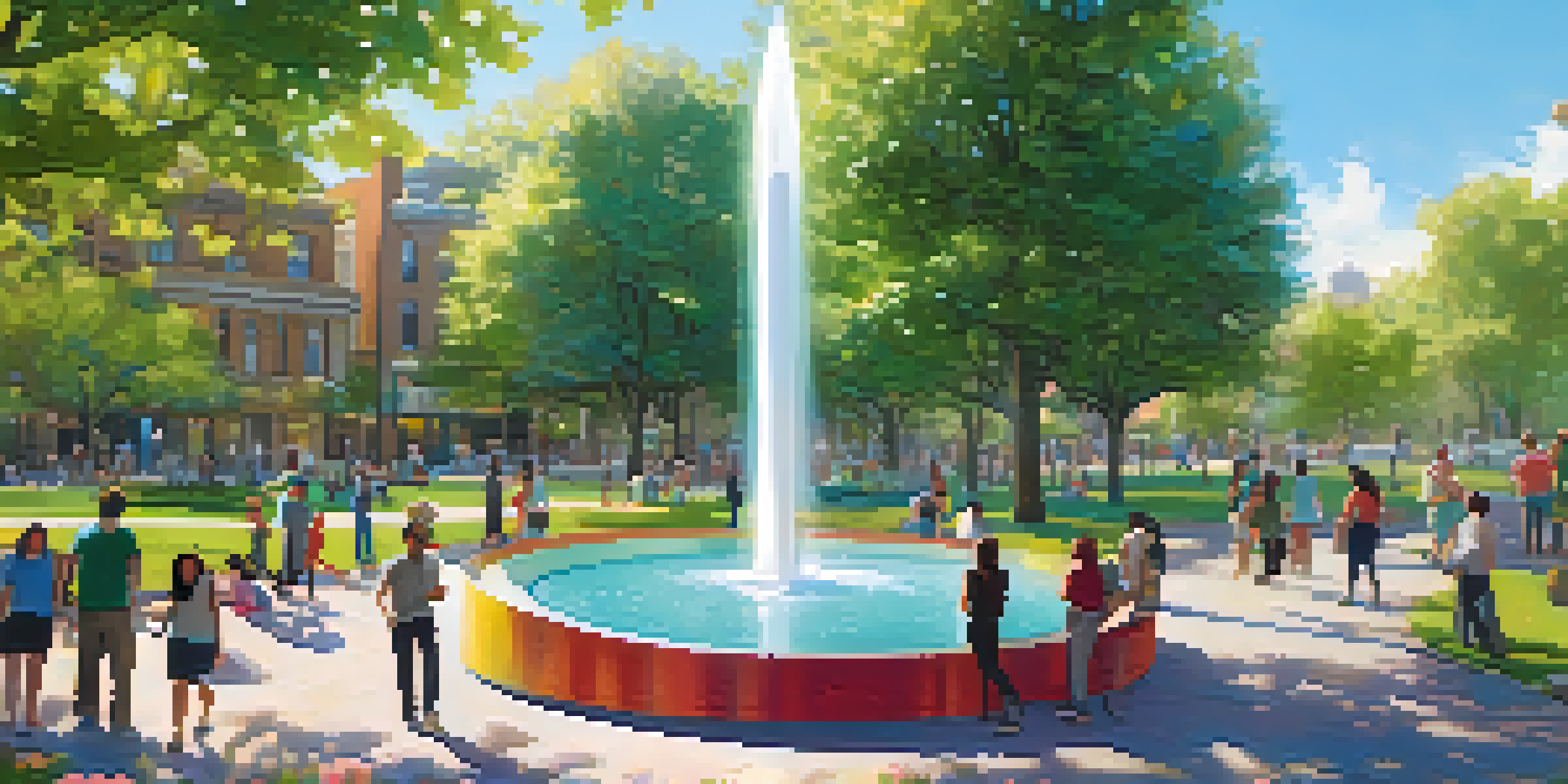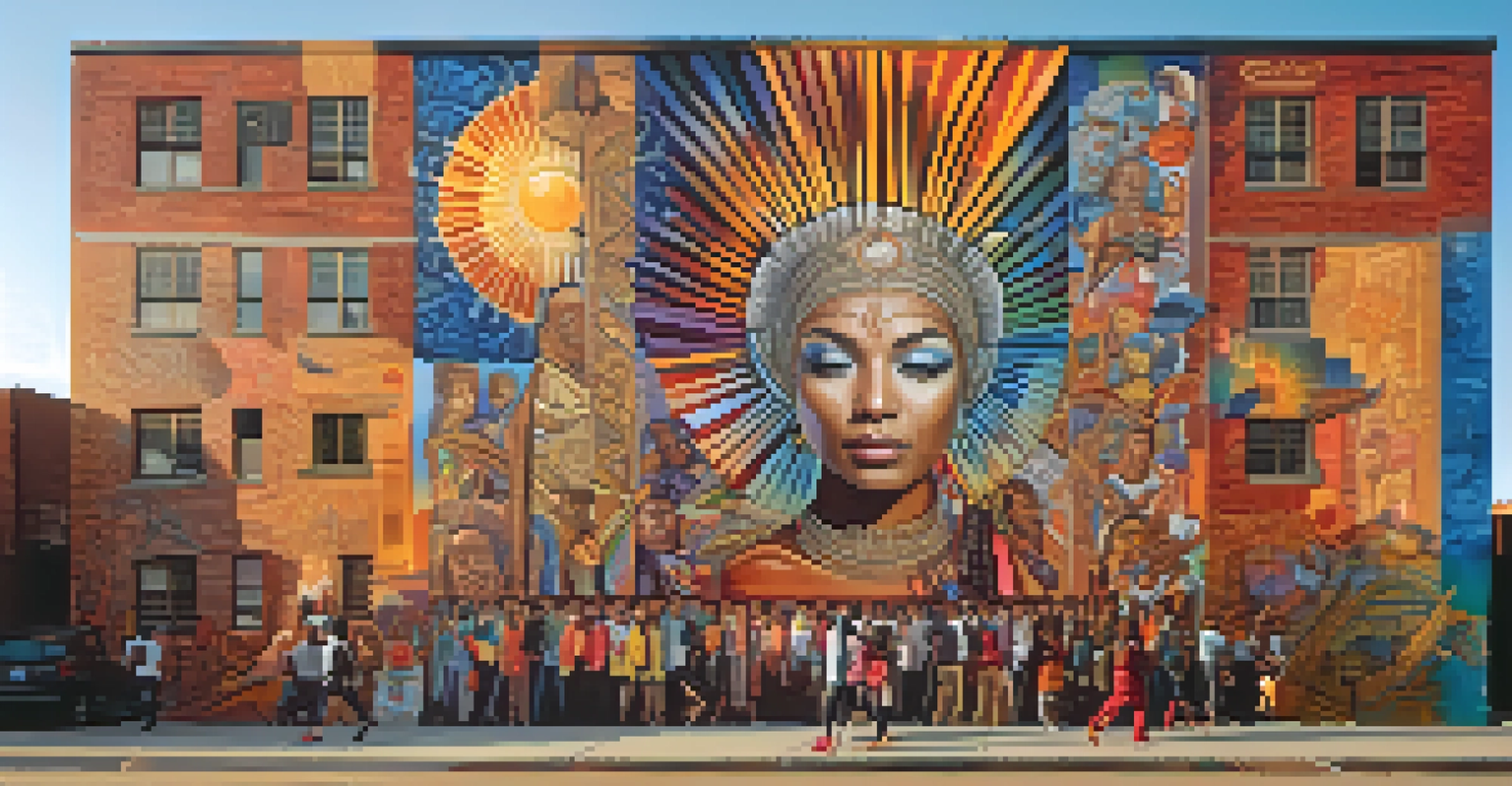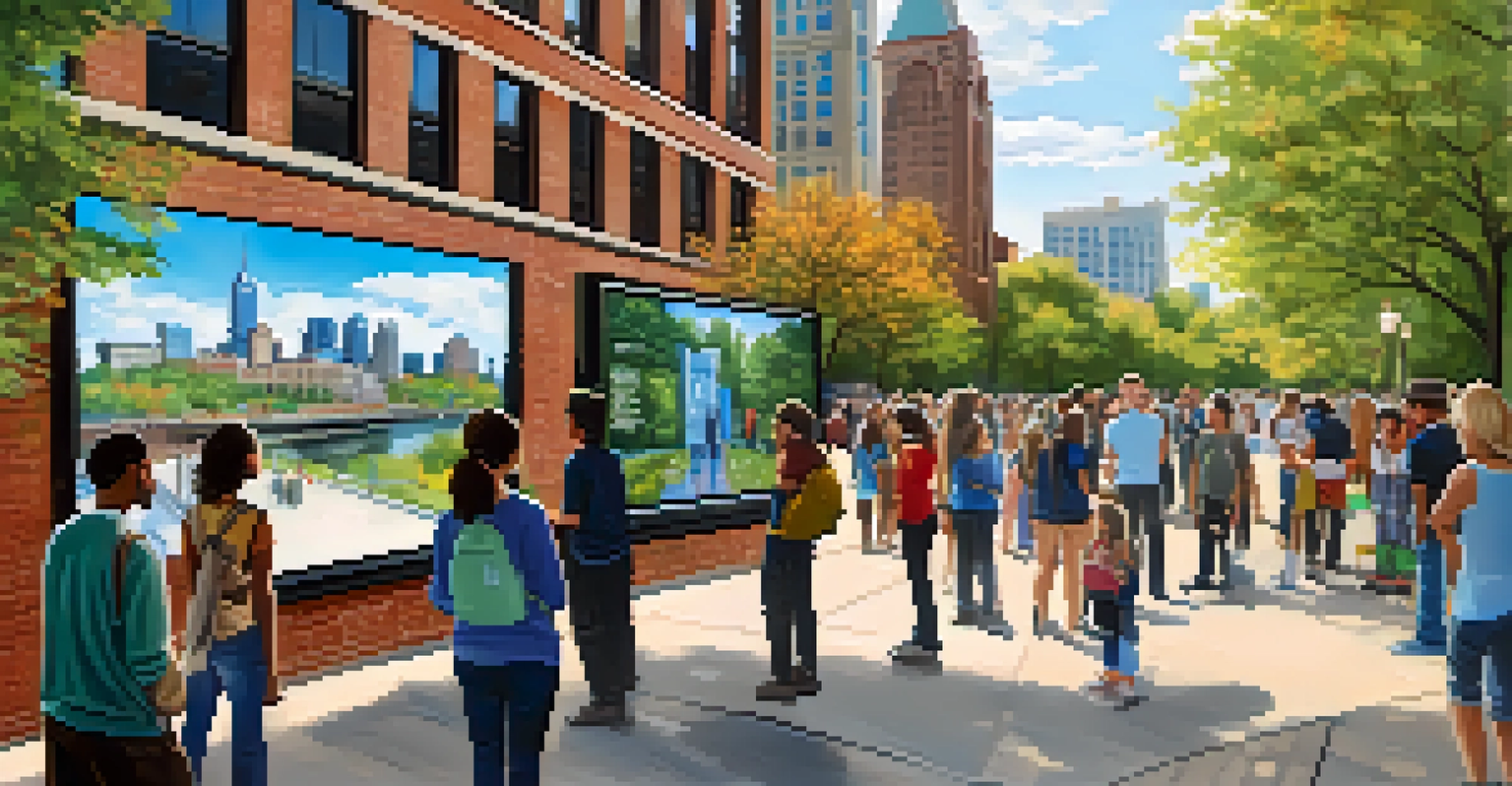Public Art in Minneapolis: Transforming Urban Spaces

The Importance of Public Art in Urban Environments
Public art serves as a vital element in urban environments, enhancing the aesthetic appeal of a city. It engages residents and visitors alike, sparking conversations and creating a sense of place. In Minneapolis, this art form transforms ordinary spaces into extraordinary experiences, making the city feel more vibrant and alive.
Public art is a bridge between the community and the artists, allowing for collaboration and understanding.
Moreover, public art fosters community engagement by inviting local artists to showcase their work. This inclusion promotes a sense of ownership and pride among residents, strengthening community bonds. As people gather around these artistic pieces, they share stories and experiences, deepening their connection to the city.
Additionally, public art contributes to the local economy by attracting tourists and boosting foot traffic. When a city invests in its artistic landscape, it draws visitors who are eager to explore and appreciate the creative expressions. Minneapolis serves as a prime example of how art can be a powerful economic driver in urban settings.
Iconic Public Art Installations in Minneapolis
Minneapolis boasts a variety of iconic public art installations that reflect its unique culture and history. One standout piece is the 'Spoonbridge and Cherry' located in the Minneapolis Sculpture Garden, which has become a beloved symbol of the city. This whimsical fountain not only captures attention but also invites interaction, as visitors can sit nearby and enjoy the beautiful surroundings.

Another noteworthy installation is the 'The Mary Tyler Moore Statue' in downtown Minneapolis, which pays homage to the beloved television show. This statue not only serves as a tribute to the show's impact but also attracts fans and tourists who want to capture a moment with Mary. Such installations create a sense of nostalgia while celebrating the city's contributions to pop culture.
Public Art Enhances Urban Life
Public art transforms urban spaces, engaging communities and enriching the aesthetic appeal of cities like Minneapolis.
Additionally, the 'We Are the People' mural, created by local artists, embodies the spirit of diversity and inclusion in Minneapolis. This vibrant mural showcases the city's commitment to celebrating its multicultural community. Each brushstroke tells a story, reflecting the voices and experiences of residents, making it a powerful representation of the city’s identity.
The Role of Community in Public Art Projects
Community involvement is essential in the creation and success of public art projects. In Minneapolis, various organizations collaborate with local artists and residents to ensure that the art reflects the community's values and stories. This participatory approach not only enriches the artwork but also fosters a sense of belonging among residents.
Art is not a thing; it is a way.
For instance, projects like the 'Art in the Hollow' initiative allow community members to contribute ideas and designs. This engagement empowers residents, giving them a voice in the artistic process and ensuring the art resonates with their experiences. When people see their ideas come to life, it strengthens their connection to the artwork and their community.
Moreover, community-driven public art projects can address local issues and promote social change. By tackling themes such as environmental awareness or social justice, these installations become catalysts for important conversations. In Minneapolis, art serves not just an aesthetic purpose, but also a platform for advocacy and community dialogue.
Challenges Facing Public Art in Minneapolis
Despite its many benefits, public art in Minneapolis faces several challenges. One major hurdle is funding, as securing financial support for new projects can be difficult. Many artists rely on grants and donations, which can be inconsistent and limit the scope of potential installations.
Another challenge involves the maintenance and preservation of existing artwork. Public pieces are subject to wear and tear, and without proper care, they can deteriorate over time. The city needs to invest in regular maintenance to ensure these artworks remain vibrant and continue to engage the community for years to come.
Community Involvement is Key
Engaging local residents in public art projects fosters a sense of belonging and ensures that the art reflects community values.
Additionally, there can be differing opinions on what constitutes public art and where it should be placed. Navigating these diverse perspectives can lead to debates within the community. It's crucial for city officials and artists to engage in open dialogue with residents to ensure that public art reflects the community's values and aspirations.
Educational Programs Supporting Public Art
Education plays a vital role in fostering an appreciation for public art in Minneapolis. Various programs aim to teach residents, especially students, about the importance of art in their community. Through workshops, guided tours, and interactive exhibits, these initiatives encourage individuals to explore their creativity and engage with the art around them.
For example, the 'Public Art Walking Tours' offer participants a chance to learn about the stories behind various installations. These tours not only provide historical context but also highlight the artists' intentions, deepening the understanding of the art's significance. Such programs make art more accessible and relatable to everyone, bridging gaps between artists and the community.
Furthermore, educational initiatives often involve partnerships with local schools, integrating art into the curriculum. By encouraging students to create their own public art projects, these programs inspire the next generation of artists and art lovers. This investment in education ensures that the appreciation for public art continues to grow within the community.
Future Trends in Public Art for Minneapolis
As we look to the future, public art in Minneapolis is poised to evolve with emerging trends. One significant trend is the incorporation of technology into public art installations. Interactive digital displays and augmented reality experiences can enhance viewer engagement, making art more dynamic and immersive.
Moreover, there is a growing emphasis on sustainability in public art projects. Artists and city planners are increasingly considering eco-friendly materials and practices when creating new installations. This focus not only promotes environmental awareness but also aligns with the city's commitment to sustainability and green initiatives.
Art as a Catalyst for Change
Public art in Minneapolis addresses social issues, promoting dialogue and unity while inspiring action within the community.
Additionally, the rise of social media is changing how public art is shared and experienced. Artists can now reach wider audiences through platforms like Instagram, creating a sense of community around their work. This trend fosters collaboration among artists, encouraging them to experiment with bold ideas and connect with others who share their passion for art.
Public Art as a Tool for Social Change
Public art serves as a powerful tool for social change, and Minneapolis is no stranger to this movement. Many installations address pressing social issues, encouraging dialogue and reflection among residents. Through thought-provoking messages, artists can inspire action and advocacy, making art a catalyst for change.
For instance, murals that tackle themes of racial justice and equality resonate deeply within the community. These artworks not only beautify urban spaces but also challenge viewers to confront difficult conversations. By using art as a platform, creators amplify marginalized voices and bring attention to injustices that need to be addressed.

Furthermore, public art can foster healing and unity in the wake of social unrest. In Minneapolis, community art projects following significant events have helped individuals process their experiences and emotions. These collaborative efforts remind us of the collective power of art to bring people together, promote understanding, and pave the way for a more inclusive future.